 "ttyymmnn" (ttyymmnn)
"ttyymmnn" (ttyymmnn)
01/12/2016 at 12:35 • Filed to: planelopnik, planelopnik history
 12
12
 21
21
 "ttyymmnn" (ttyymmnn)
"ttyymmnn" (ttyymmnn)
01/12/2016 at 12:35 • Filed to: planelopnik, planelopnik history |  12 12
|  21 21 |
Welcome to This Date in Aviation History , getting you caught up on milestones and important historical events in aviation from January 9 through January 12.
!!! UNKNOWN CONTENT TYPE !!!
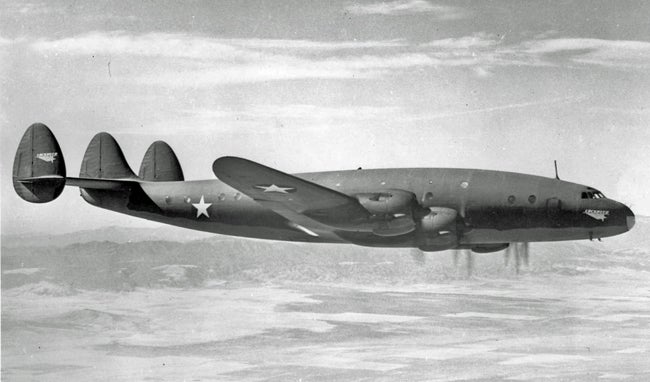
January 9, 1943 – The first flight of the Lockheed Constellation.
The Lockheed Constellation, nicknamed “Connie,” is arguably one of the most beautiful aircraft ever designed. But the comely Connie started life as a much more plain Jane aircraft, the
!!!error: Indecipherable SUB-paragraph formatting!!!
, a run of the mill, four-engine transport that would never enter production. In 1939, the eccentric billionaire
!!!error: Indecipherable SUB-paragraph formatting!!!
, the owner of Transcontinental & Western Airlines (which would later become TWA), held a meeting with
!!!error: Indecipherable SUB-paragraph formatting!!!
, the president of T&WA, along with other Lockheed executives. Among those present was
!!!error: Indecipherable SUB-paragraph formatting!!!
, who was destined to become one of America’s greatest aviation engineers. Hughes expressed his desire for a new large passenger airliner, as he felt that the Excalibur wouldn’t meet his needs. So the Lockheed engineers went back to the drawing board, and just three weeks later they presented Hughes with the initial plans for the Connie, now designated L-049. The new airliner, powered by a quartet of
!!!error: Indecipherable SUB-paragraph formatting!!!
radial engines, would be the most expensive aircraft produced to date, and Hughes himself funded the purchase of 40 aircraft since T&WA didn’t have the funds to pay for them. But along with the purchase, Hughes got to weigh in on the design, and he brought in famed designer
!!!error: Indecipherable SUB-paragraph formatting!!!
to redesign the cabin to his liking. The Constellation was a truly modern airliner, and featured electric de-icing, hydraulic assisted controls and variable pitch propellers. The wings were patterned after the
!!!error: Indecipherable SUB-paragraph formatting!!!
, which had been designed by Kelly Johnson. The Connie was also pressurized to allow for high altitude flight. Production of the Constellation was a tightly held secret, since Hughes didn’t want Pan Am or any other air carriers to know about the new airliner. But the secret was finally revealed when the US Army came to inspect Lockheed’s production facility a few months before the war. Following the Japanese attack on Pearl Harbor, Lockheed’s production lines became the property of the US government, and production of the Constellation would have to wait until the Army got theirs first. Thus, the first flight of the L-049 Constellation is really the first flight of the Lockheed C-69, which was its military designation. The Army ordered 260 C-69s for cargo and troop transport, and even considered converting it into a bomber. But problems with the engines led to delays that caused the Army to reduce its order to 73 aircraft. Eventually, only 22 C-69s were built, and just 15 were delivered. Following the war, production returned to the civilian market, with military Connies converted to civilian aircraft. Improvements were made to those already under construction, such as the addition of a luxury interior, more windows, a galley, and crew rest areas, along with better ventilation and heating. And, since the C-69 had already been tested and flown by the Army, Lockheed was far ahead of its competitors who were still working on their own post-war designs. The first production L-049 flew on July 12, 1945 and was delivered to TWA four months later. The first commercial flight was from New York City to Paris, a trip that took nearly 17 hours with stops in Newfoundland and Ireland for fuel. The Connie proved to be a remarkably adaptable airplane. Future variants to its civilian version added increased speed, passenger space and range, while the
!!!error: Indecipherable SUB-paragraph formatting!!!
electronic surveillance variant would serve into the 1980s.
(Photo via
!!!error: Indecipherable SUB-paragraph formatting!!!
)
!!! UNKNOWN CONTENT TYPE !!!

January 10, 1990 – The first flight of the McDonnell Douglas MD-11. Passenger aviation entered the jet age with the de Havilland Comet, and aircraft that followed, such as the four-engine !!!error: Indecipherable SUB-paragraph formatting!!! and the !!!error: Indecipherable SUB-paragraph formatting!!! helped usher in global air travel. But with the success of the modern jet airliner came an increased demand for seating capacity, increased range and lower operating costs that could only be met at the time by stretching the current fleet of single-aisle aircraft. Since a full double-decker jet was not technically feasible at the time, the answer was to widen the airliner to allow for a second aisle, and the first of what would be called the wide-body class of airliners arrived in 1969 with the !!!error: Indecipherable SUB-paragraph formatting!!! , an aircraft that was also a partial double-decker. The 747 was soon followed by the !!!error: Indecipherable SUB-paragraph formatting!!! and !!!error: Indecipherable SUB-paragraph formatting!!! , both wide-body tri-jets. The DC-10, though it suffered some early difficulties in its development, including some high profile crashes, eventually became a reliable people hauler and cargo aircraft, but as early as 1976 McDonnell Douglas began work on developing a more advanced version of the wide-body tri-jet. They considered stretched versions of the existing DC-10, but when customers showed no interest, they continued their search for a new airliner. By 1984, they had settled on two versions of what would be called the MD-11, one, the MD-11X-10 based on a DC-10-30 with a range of 6,500 miles, and the MD-11X-20, which would have a longer fuselage to accommodate up to 331 passengers with a range of 6,000 miles. By the end of 1986, McDonnell Douglas had fifty-two firm orders from ten airlines in three different versions: passenger, combined passenger and freight (combi), and freighter. While based on the DC-10, the MD-11 has a stretched fuselage and increased wingspan with winglets to improve the wing’s efficiency, new, more efficient high-bypass turbofan engines and an increased use of composites to reduce weight for improved range. The advanced cockpit has a crew of two, removing the need for a flight engineer. It also employs what McDonnell Douglas called the Advanced Common Flightdeck (ACF) that it shares with the !!!error: Indecipherable SUB-paragraph formatting!!! (the final variant of the DC-9 series following the merger of McDonnell Douglas and Boeing in 1997). Finnair received the first MD-11 into service in 1990, and the 200th and final MD-11 was delivered to Sabena in April 1998. Ultimately, the MD-11 was a victim of a lack of sales caused by competition with other aircraft in the Boeing line, particularly the !!!error: Indecipherable SUB-paragraph formatting!!! and !!!error: Indecipherable SUB-paragraph formatting!!! , as well as competition from the !!!error: Indecipherable SUB-paragraph formatting!!! and !!!error: Indecipherable SUB-paragraph formatting!!! . While retired as a passenger airliner, the MD-11 remains in service today as a freighter. (Photo by Arcturus via !!!error: Indecipherable SUB-paragraph formatting!!! )
!!! UNKNOWN CONTENT TYPE !!!
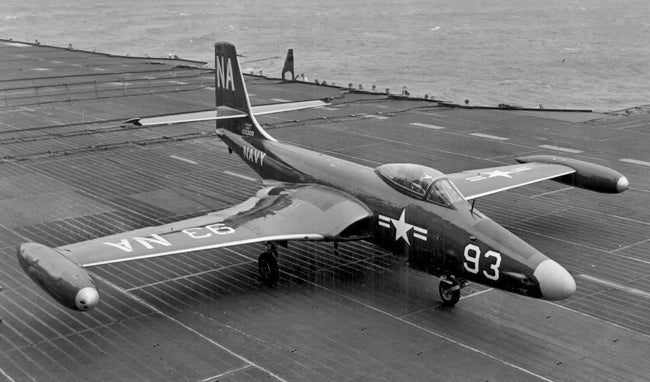
January 11, 1947 – The first flight of the McDonnell F2H Banshee.
Development of jet aircraft after WWII was quite rapid, and the Banshee, the successor to the
!!!error: Indecipherable SUB-paragraph formatting!!!
, the first true jet to operate from US carriers, was on the drawing board even before the Phantom entered production. The Phantom was only McDonnell’s second aircraft, and first success, and while only sixty-two were built, the former aviation parts supplier was now firmly entrenched in the business of providing fighters for the US Navy. McDonnell’s original intention was simply to produce an enlarged, more capable version of the Phantom, but that soon proved to be unfeasible. The new
!!!error: Indecipherable SUB-paragraph formatting!!!
turbojets produced nearly twice the thrust of the Phantom’s engines, but that power came at the penalty of needing a larger internal space to fit the engines and more space to hold fuel for the early, thirsty turbojets. Other improvements included the repositioning of the guns to below the nose to avoid blinding the pilot while firing at night, a pressurized, air-conditioned cockpit, and bulletproof canopy glass that was heated to prevent frost. While the Banshee was essentially a new aircraft, commonalities between it and the Phantom allowed McDonnell to complete the prototype just three months after the first Phantoms came off the production line. After testing, fifty-six of the original Banshee, the F2H-1, were built, but it was the F2H-2 that became the most produced variant. This model included detachable wingtip fuel tanks to increase range, eight underwing hard points that could hold nearly 1,600 pounds of external stores, and more powerful J34-WE-34 turbojets that pushed the Banshee to 580 mph in level flight. The Banshee would be one of the primary US aircraft to be flown during the Korean War. Initially employed as a high-altitude escort for American bombers, the destruction of the North Korean air force soon freed up the Banshee to take over low level ground attack missions. Since most of their missions were flown over South Korea, and not near the Yalu River to the north, the Banshee never had to mix it up with Chinese fighters coming south, and therefore scored no air-to-air victories during the war. Only three Banshees were lost to ground fire. And, in the era before antiaircraft missiles, the speed of the Banshee made it an invaluable asset as a reconnaissance aircraft, where it could fly high and fast above the battlefield and was practically immune to antiaircraft fire. While the Navy was initially reluctant to adopt swept wing aircraft, thinking that their slow-speed handling characteristics would make them too hard to land on carriers, they soon realized that the performance of the newer swept wing fighters put them at too much of a disadvantage, and the Banshee was retired from service in 1959 in favor of more modern designs.
(US Navy photo)
!!! UNKNOWN CONTENT TYPE !!!
Short Take Off
!!! UNKNOWN CONTENT TYPE !!!

January 9, 1963 – The first flight of the Hawker Siddeley HS 121 Trident, a short- to medium-range airliner and the first to feature a T-tail with a third engine on the fuselage centerline. While the Trident’s design was unique for its era, political infighting in the British government over what form the new airliner would take delayed delivery until after the appearance of the !!!error: Indecipherable SUB-paragraph formatting!!! , a similar tri-jet configuration, and seriously hampered sales of the new airliner. Seating up to 140 passengers depending on variant, the Trident flew for the airlines of eight nations, as well as the militaries of China and Pakistan. By the time the Trident ceased production, only 117 had been built, while Boeing would eventually complete over 1,800 727s. (Photo by Christian Volpati via !!!error: Indecipherable SUB-paragraph formatting!!! )
!!! UNKNOWN CONTENT TYPE !!!

January 9, 1951 – The first flight of the Tupolev Tu-85 (NATO reporting name “Barge”). On four different occasions in 1944, US !!!error: Indecipherable SUB-paragraph formatting!!! bombers attacking Japan were forced to make an emergency landing in Russia, and rather than return the bombers, the Soviets kept them and made exact duplicates which they designated !!!error: Indecipherable SUB-paragraph formatting!!! . The Tu-85 was a much larger variant of the Tu-4, being nearly 50% heavier and having almost twice the range. But still without the range to attack the US from Russia, and after the B-29 proved susceptible to attack by more modern !!!error: Indecipherable SUB-paragraph formatting!!! fighters, the Russians halted development of the Tu-85 after two prototypes, choosing instead to develop the !!!error: Indecipherable SUB-paragraph formatting!!! which remains in service today. (Photo authors unknown)
!!! UNKNOWN CONTENT TYPE !!!
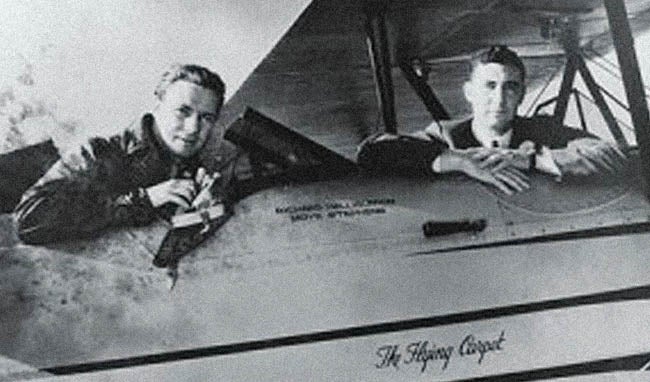
January 9, 1900 – The birth of Richard Halliburton.
The 1930s was a wild era of barnstorming, exploration and daredevilry, and one of the more famous daredevils was Richard Halliburton (at left in photo). Halliburton initially found fame after swimming the length of the Panama Canal while paying a toll of just 39 cents, and was the first to climb Mt. Fuji in winter. His contribution to aviation history stems from an epic, round-the-world flight in a modified
!!!error: Indecipherable SUB-paragraph formatting!!!
named
Flying Carpet
with pilot
!!!error: Indecipherable SUB-paragraph formatting!!!
(eventual co-founder of Northrop Aviation) at the controls. Halliburton called it “one of the most fantastic, extended air journeys ever recorded,” and it took 18 months, covered 33,660 miles and visited 34 countries. Halliburton died (presumed) in 1939 while attempting to cross the Pacific Ocean from Hong Kong to San Francisco in a Chinese junk.
(Photo author unknown)
!!! UNKNOWN CONTENT TYPE !!!
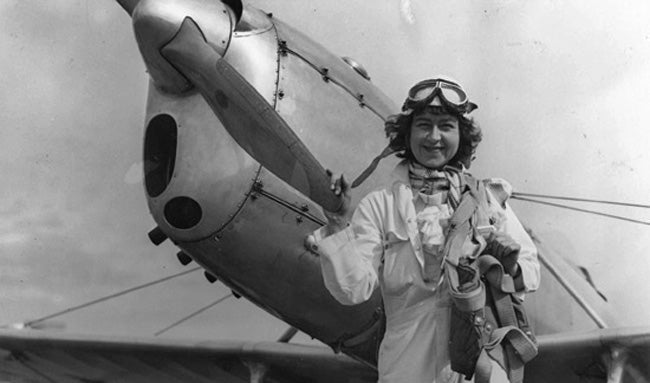
January 10, 1967 – The death of Laura Houghtaling Ingalls, a pioneering aviatrix and winner of the prestigious !!!error: Indecipherable SUB-paragraph formatting!!! for her 1934 flight in a !!!error: Indecipherable SUB-paragraph formatting!!! from Mexico to Chile, then across the Andes to Rio de Janeiro, then to Cuba and finally to Floyd Bennett Field in New York. The flight was the first over the Andes by a woman and the first flight by a woman from North America to South America. It also set a woman’s distance record of 17,000 miles. In 1942, Ingalls was convicted of serving as a publicity agent for the Nazis by accepting money from the German embassy while encouraging American non-intervention in WWII. Sentenced to up to 8 years in prison, Ingalls was released in 1943 and applied for, but never received, a presidential pardon despite support from ace and Medal of Honor recipient !!!error: Indecipherable SUB-paragraph formatting!!! . Ingalls died in 1967. (Image author unknown)
!!! UNKNOWN CONTENT TYPE !!!
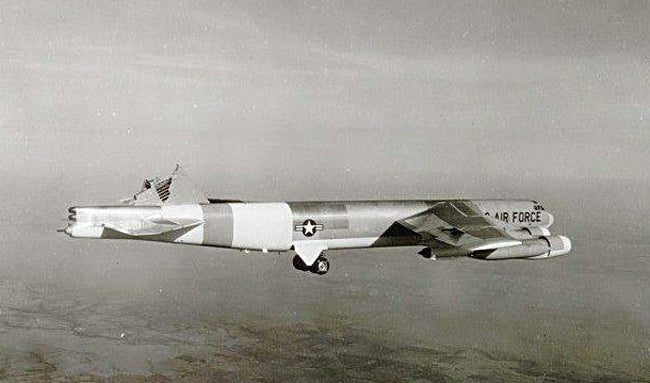
January 10, 1964 – A Boeing B-52H Stratofortess has its vertical stabilizer sheared off by turbulence but lands safely.
The B-52H, on loan from the Air Force and flying with a 4-man civilian crew, was on a test mission to record sensor data for high speed, low altitude flight. Over New Mexico’s Sangre de Christo mountains, the crew encountered severe turbulence at 14,000 feet, and though it lasted only 9 seconds, it was so severe that the vertical stabilizer was torn off the Stratofortress. In spite of the loss of yaw control from the missing stabilizer, and a center of gravity that had shifted due to the loss of the approximately 2000-pound fin, the crew managed to control the aircraft and call for assistance from chase planes and Boeing engineers on the ground. After flying for five hours, they diverted to Blytheville, Arkansas for more favorable weather conditions and landed the bomber without incident. The Air Force produced a safety film about the flight titled
!!!error: Indecipherable SUB-paragraph formatting!!!
.
(US Air Force photo)
!!! UNKNOWN CONTENT TYPE !!!

January 11, 1895 – The birth of Laurens Hammond.
Hammond is not exactly a household name in aviation history, as he is best known for his invention of the
!!!error: Indecipherable SUB-paragraph formatting!!!
, the
!!!error: Indecipherable SUB-paragraph formatting!!!
, and the
!!!error: Indecipherable SUB-paragraph formatting!!!
, the world’s first polyphonic music synthesizer. But following service in WWI as an engineer, and working as an inventor after the war, Hammond served the US during WWII by developing bomb and missile guidance systems. He was awarded patents for infrared and light-sensing bomb guidance systems, he developed a new gyroscope that was less sensitive to the cold of high altitude, as well as controls for a gliding bomb, the forerunner of our modern guided missile. Hammond died in 1973.
(Photo author unknown)
!!! UNKNOWN CONTENT TYPE !!!
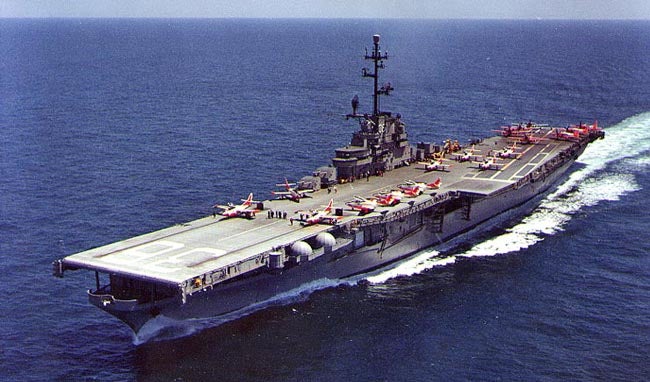
January 12, 1953 – The US Navy begins operational flights from the USS
Antietam
(CV-36).
The first aircraft carriers, having been originally built from existing ships, had long, straight decks that were fine for propeller aircraft, but the higher landing speeds of jet aircraft made such an arrangement much more dangerous. The idea for an angled flight deck was first proposed by Royal Navy Captain Dennis Campbell, but it was the Americans, with the USS
Antietam
, who first proved the benefits of this design when a sponson was added to support the overhanging, angled deck. Existing
Essex
and
Midway
class carriers were retrofitted with angled decks, while the first purpose-built American angled deck carrier came with the
Forrestal
class. The first angled deck carrier for the British constructed with an angled deck was the HMS
Ark Royal
(R09).
(US Navy photo)
!!! UNKNOWN CONTENT TYPE !!!
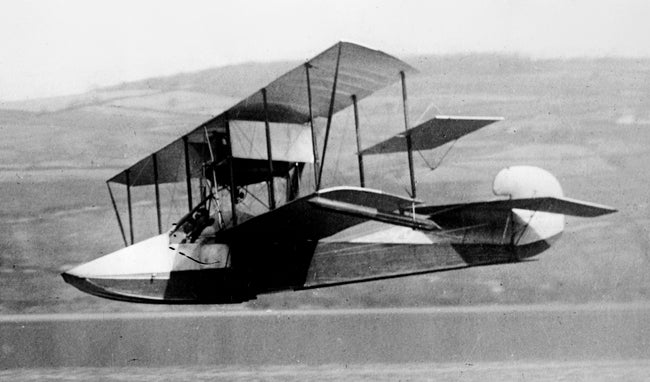
January 12, 1912 – The first flight of the Curtiss Model F,
a pre-WWI flying boat developed by Curtiss and flown in large numbers by the US Navy, becoming the standard flying boat trainer in 1917. The biplane aircraft had a crew of two and was powered by a single engine powering a pusher propeller. In addition to the US Navy, the Model F or its variants were flown by Brazil, Italy, England and Russia, who ordered two batches of the flying boat. More than 150 Model Fs were built in seven variants.
(US Library of Congress photo)
!!! UNKNOWN CONTENT TYPE !!!
!!! UNKNOWN HEADER TYPE (MULTI-LINE BREAK?) !!!
!!! UNKNOWN CONTENT TYPE !!!
!!! UNKNOWN CONTENT TYPE !!!
!!! UNKNOWN CONTENT TYPE !!!
!!! UNKNOWN CONTENT TYPE !!!
If you enjoy these Aviation History posts, please let me know in the comments. And if you missed any of the past articles, you can find them all at
!!!error: Indecipherable SUB-paragraph formatting!!!
.
!!! UNKNOWN CONTENT TYPE !!!
 Jcarr
> ttyymmnn
Jcarr
> ttyymmnn
01/12/2016 at 12:55 |
|
The most attractive of the wide-body trijets, in my humble opinion.
If it had sold better, we might have had a better chance of seeing the MD-12 come to fruition.
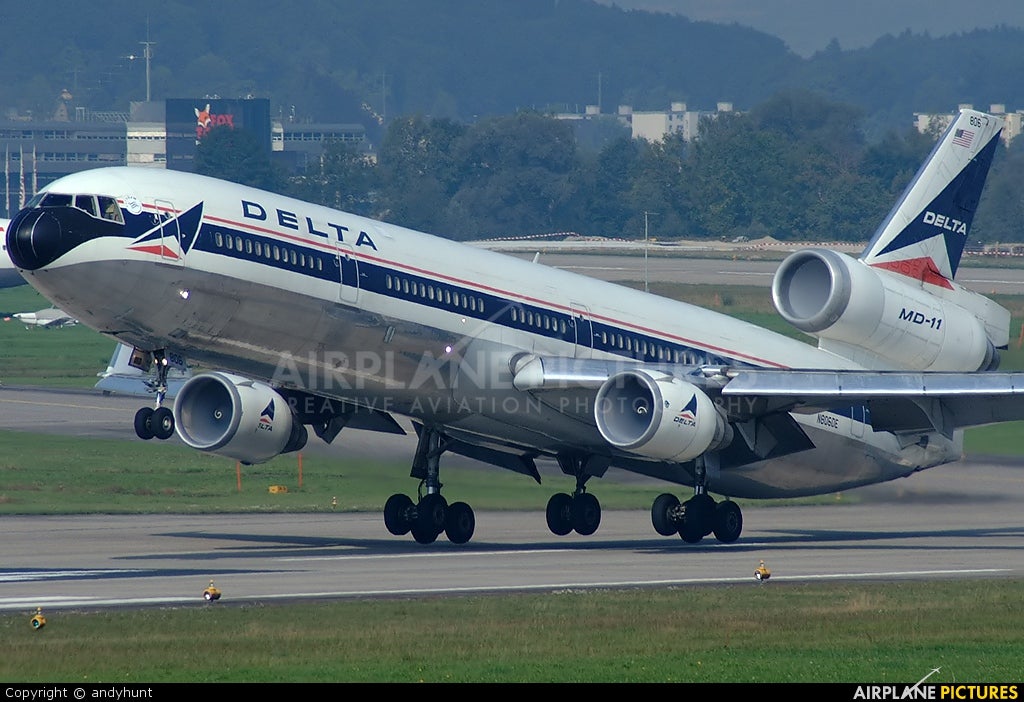
 ttyymmnn
> Jcarr
ttyymmnn
> Jcarr
01/12/2016 at 12:57 |
|
I think it was probably ultimately doomed by the twin-engine ETOPS airliner. Nobody wanted three engines any more.
 RamblinRover Luxury-Yacht
> ttyymmnn
RamblinRover Luxury-Yacht
> ttyymmnn
01/12/2016 at 12:59 |
|
As a musician, are you familiar with how the tone-wheel technology of a Hammond organ works? It’s fascinating.
 Jcarr
> ttyymmnn
Jcarr
> ttyymmnn
01/12/2016 at 13:02 |
|
Solution: leave the fairing, just mount the APU where the #2 engine would have been.
 ttyymmnn
> RamblinRover Luxury-Yacht
ttyymmnn
> RamblinRover Luxury-Yacht
01/12/2016 at 13:02 |
|
Actually, I’m not. I don’t know anything about them, really. Sounds like I’ve got some homework to do.
 Smallbear wants a modern Syclone, local Maple Leafs spammer
> ttyymmnn
Smallbear wants a modern Syclone, local Maple Leafs spammer
> ttyymmnn
01/12/2016 at 13:11 |
|
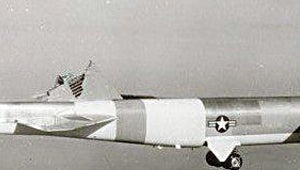
Boeing knows how to build a rugged plane.
This.
Many, many B-17's making it home in a theoretically unflyable condition.
The 707. The example I have in mind is the one that made it down to a perfect landing at a nearby Air Force base on fire with one outboard engine and most of the wing beyond it missing.
And so on.
 RamblinRover Luxury-Yacht
> ttyymmnn
RamblinRover Luxury-Yacht
> ttyymmnn
01/12/2016 at 13:12 |
|
Pretty much all the other electric organs use a tone generating circuit based on pumping out a simple sine wave electronically and then messing with that. The Hammond is wholly unique, in that it has a cross-ways spool within that rotates at a specific speed, and which has a whole series of “tone wheels” on it. These tone wheels work similarly to the pulse generation for an ABS brake system or something of that nature - a magnetic pickup that has a series of teeth spinning past. The Hammond then combines different sets of these tone wheels to produce the frequencies of the notes: it’s an additive waveform thing. As a consequence of the “impurity” of the waves generated and the wave combination technique, you get a unique, warm sound. There’s also something of a “pulling” sort of sound as the tone wheels cut in, and some level of pop and chirp in the keys as they’re depressed. Hammonds are awesome.
 ttyymmnn
> RamblinRover Luxury-Yacht
ttyymmnn
> RamblinRover Luxury-Yacht
01/12/2016 at 13:16 |
|
There’s also something of a “pulling” sort of sound as the tone wheels cut in, and some level of pop and chirp in the keys as they’re depressed.
Fascinating. My father is an organist, and a few years ago we played a recital at the school where I was teaching. The organ was a crappy electronic, but it had a setting called “chiff” that emulates the puff-of-air sound that you get in a traditional organ. It makes the ersatz organ sound just a tad more authentic.
Thanks for the explanation, but I’m going to look more deeply into this. It sounds fascinating.
 ttyymmnn
> Smallbear wants a modern Syclone, local Maple Leafs spammer
ttyymmnn
> Smallbear wants a modern Syclone, local Maple Leafs spammer
01/12/2016 at 13:18 |
|
Indeed. For fun, Google “B-17 battle damage.”
 RamblinRover Luxury-Yacht
> ttyymmnn
RamblinRover Luxury-Yacht
> ttyymmnn
01/12/2016 at 13:26 |
|
I believe the organ in the video below is an early portable B3. Lots of crackle and pop in the keys:
In this much later performance you can hear some of the characteristic “pulling” sound as well:
Here’s the tonewheel array from an M3:
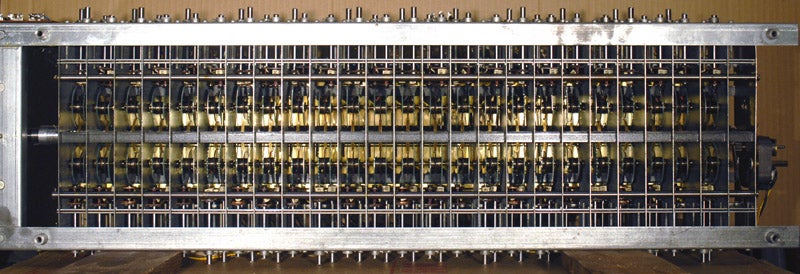
My church had a Hammond C3 with some issues that it very nearly gave away while I was in college. I was sad.
 X37.9XXS
> ttyymmnn
X37.9XXS
> ttyymmnn
01/12/2016 at 13:59 |
|
Recommended without reservation

.
.
.
.
.
.
.
.
.
.
.
I honestly think that Richard Halliburton was incapable of writing a boring sentence
 ttyymmnn
> X37.9XXS
ttyymmnn
> X37.9XXS
01/12/2016 at 14:00 |
|
Thanks for the tip. After reading a bit about him for this post, I really wanted to go read some of his work. I’ll check this out.
 Rusty Vandura - www.tinyurl.com/keepoppo
> ttyymmnn
Rusty Vandura - www.tinyurl.com/keepoppo
> ttyymmnn
01/12/2016 at 14:37 |
|
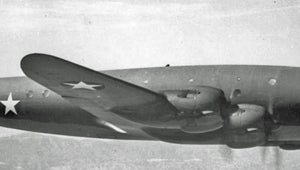
Love the Connie, but the later model with the wingtip tanks looked cooler.
 Rusty Vandura - www.tinyurl.com/keepoppo
> ttyymmnn
Rusty Vandura - www.tinyurl.com/keepoppo
> ttyymmnn
01/12/2016 at 14:44 |
|

From the Department of What the Fuck Just Happened?
 ttyymmnn
> Rusty Vandura - www.tinyurl.com/keepoppo
ttyymmnn
> Rusty Vandura - www.tinyurl.com/keepoppo
01/12/2016 at 14:51 |
|
Ah, ground control, this is civilian B-52H. We’d like to declare a Code Brown.
 ttyymmnn
> Rusty Vandura - www.tinyurl.com/keepoppo
ttyymmnn
> Rusty Vandura - www.tinyurl.com/keepoppo
01/12/2016 at 14:52 |
|
You can still see the P-38 wings on this bird. I wrote about the Super Connie one other time. It gets a little confusing the farther you get into the production run.
 Rusty Vandura - www.tinyurl.com/keepoppo
> ttyymmnn
Rusty Vandura - www.tinyurl.com/keepoppo
> ttyymmnn
01/12/2016 at 14:59 |
|
Never occurred me to make a distinction between the Connie and the Super Connie.
 facw
> Smallbear wants a modern Syclone, local Maple Leafs spammer
facw
> Smallbear wants a modern Syclone, local Maple Leafs spammer
01/13/2016 at 07:07 |
|
I guess this F-15 was pre-Boeing merger:

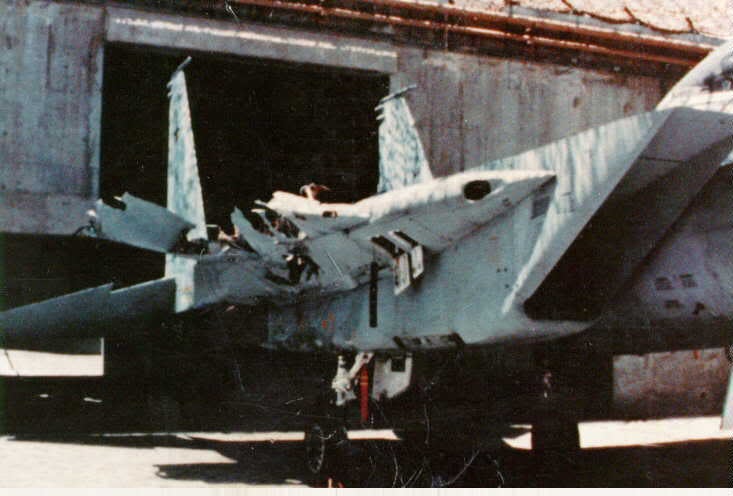
 Smallbear wants a modern Syclone, local Maple Leafs spammer
> facw
Smallbear wants a modern Syclone, local Maple Leafs spammer
> facw
01/13/2016 at 07:12 |
|
This is a stupid question, but did that happen on the ground?
 facw
> Smallbear wants a modern Syclone, local Maple Leafs spammer
facw
> Smallbear wants a modern Syclone, local Maple Leafs spammer
01/13/2016 at 07:25 |
|
Nope, Israeli F-15 was in a mid-air collision during a training exercise and lost his wing. Was able to land it anyway. He said he would have just ejected if he knew how bad it was, but couldn’t see that the wing was just gone due to a cloud of leaking fuel.
 Smallbear wants a modern Syclone, local Maple Leafs spammer
> facw
Smallbear wants a modern Syclone, local Maple Leafs spammer
> facw
01/13/2016 at 07:27 |
|
I have no words.
Except that I'm not totally surprised to see "Israeli" in there.